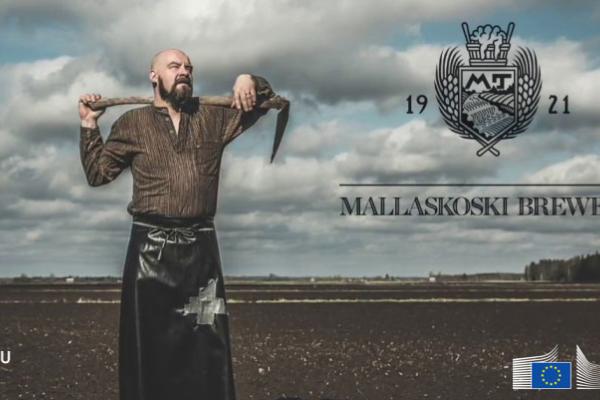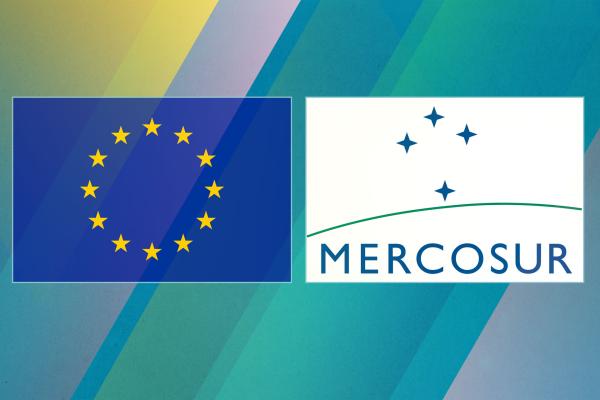- Country or region
- Mercosur
- Trade topics
- Negotiations and agreements
The EU has concluded a trade agreement with the four founding members of Mercosur (Argentina, Brazil, Paraguay, and Uruguay) as part of a bi-regional Association Agreement.
Current trade relations between the EU and Mercosur are based on an inter-regional Framework Cooperation Agreement which entered into force from 1999.
The EU and individual Mercosur countries also have bilateral framework cooperation agreements, which also deal with trade-related matters.
The EU-Mercosur negotiations for a Trade Agreement
The EU-Mercosur negotiations started in 2000 and over the years experienced different phases.
In May 2016, the EU and Mercosur relaunched the negotiation process, exchanged new market access offers, and intensified the pace of negotiations by holding negotiation rounds and meetings at regular intervals.
On 28 June 2019, the European Union and Mercosur reached a political agreement for an ambitious, balanced and comprehensive trade agreement covering issues such as:
- tariffs;
- rules of origin;
- technical barriers to trade;
- sanitary and phytosanitary measures;
- services;
- government procurement;
- intellectual property;
- sustainable development, and;
- small- and medium-sized enterprises.
Trade picture
Note: the figures below represent EU’s trade with the four Mercosur countries.
- The EU is Mercosur's number one trade and investment partner.
- The EU is Mercosur's second biggest trade in goods partner after China, accounting for 16.2% of the bloc's total trade in 2021. Mercosur is the no. 11 trade in goods partner for the EU.
- In 2021 the EU's exports to the four Mercosur countries totalled €45 billion, while Mercosur's exports to the EU were €43 billion.
- Mercosur's biggest exports to the EU in 2021 were mineral products (22.3% of total exports), vegetable products including soya and coffee (20.7%), and foodstuffs, beverages and tobacco (19.1%)
- The EU's exports to Mercosur include machinery and appliances (27.8% of total exports), chemicals and pharmaceutical products (26.3%), transport equipment (10.5%).
- The EU exported €17.2 billion of services to Mercosur while Mercosur exported €7.7 billion of services to the EU in 2020.
- The EU is the biggest foreign investor in the region, with an accumulated stock of investment that has gone up from €130 billion in 2000 to €330 billion in 2020.
The EU and Mercosur
Mercosur was established in 1991 and includes Argentina, Brazil, Paraguay, and Uruguay.
Venezuela, which officially joined in July 2012, was suspended from membership in 2017.
In December 2012, the Protocol of Accession of Bolivia to Mercosur was signed. This protocol is pending ratification by the parliaments of Mercosur countries.
The EU has bilateral Partnership and Cooperation agreements with Argentina, Brazil, Paraguay and Uruguay.
Mercosur countries no longer benefit from the Generalised Scheme of Preferences (GSP) scheme due to their classification as high middle-income countries.
Trading with Mercosur
- Importing into the EU from Mercosur
- EU trade defence measures on imports from Mercosur
- Exporting from the EU to Mercosur
- Trade relations are part of the EU's overall political and economic relations with Argentina, Brazil, Paraguay, Uruguay and Venezuela
- Mercosur official website
- Sustainability impact assessment on EU-Mercosur Association Agreement Negotiations
Exporters' stories

The company sees growing demand for its types of beer in South America, and especially in Argentina, and would like to launch exports there. A trade agreement between the EU and Mercosur would open up a whole new market, where similar tastes in beer are found on both sides of the Atlantic.
Latest news
The EU and Mercosur are engaged in constructive discussions with a view to finalising the pending issues within the Association Agreement.
Joint communiqué of the European Union and Mercosur.
The Commission published today the final version of the SIA on the potential impact of the EU-Mercosur agreement.


